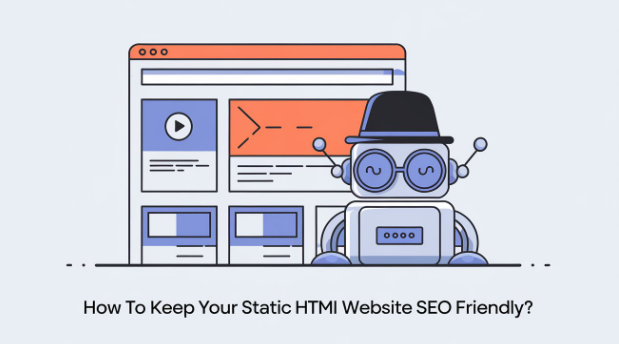So, you’ve built a clean, fast-loading static HTML website. Great start, but here’s the catch: if it’s not SEO-friendly, it might as well be invisible.
Static websites require a hands-on approach to SEO. From clean code to crawlable structure, there’s a method to the optimizations. This article walks you through practical and proven ways to keep your static site in Google’s good books.
1. Ensure clean and valid HTML code
We know the truth quite well—search engines love clean code. And so do browsers. Messy or broken HTML doesn’t just affect how your page looks but it also affects how it’s crawled, indexed and ranked. If your <title> is missing or your tags aren’t closed properly, Google might not see your content the way you intended.
The fix? Validate your code regularly. You can do it manually but be smart and avail yourself of modern technology. Use tools like an HTML validator to spot errors that may slip through during hand-coding or template updates. These tools catch most things from unclosed elements to unpaired instances.
A valid HTML foundation gives your website structure, stability and clarity.
2. Create a logical structure with internal linking
Think of your website as a building, and internal links act as the hallway connecting its rooms. Without a clear structure, visitors (and search engines) get lost. Static websites often rely on manual linking, so it’s your job to ensure each page is connected logically. It’s one of the best on-page SEO practices.
Start with a homepage that branches out to key sections like services, blog and contact pages. Then interlink related content using descriptive anchor texts. For example, if one page discusses “meta tags,” link it to a guide on “HTML best practices.”
Not only does this boost navigation, but it also distributes link equity which helps lower-level pages rank better.
3. Optimize meta tags and headings properly
Meta tags and headings are your static website’s way of speaking to search engines, so make every word count. Your <title> tag should be unique for each page, ideally under 55-60 characters and optimized with relevant keywords.
Pair it with a well-written <meta description> (150-160 characters) that gives users a reason to click. Also, avoid duplication across pages. Static sites are prone to this problem since each file is coded manually.
Furthermore, for headings, use one <h1> per page for the main topic and follow a logical order with <h2>, <h3> and so on.
4. Improve page speed with lightweight assets
When it comes to modern SEO, speed is a necessity. A slow-loading static website can send users running before they even see your content. The common culprits?
- Excessive fonts.
- Unminified CSS files.
- Large images.
Trim the fat. Compress images using tools like TinyPNG and use only the assets you truly need. Also, consider hosting with a good static web host and using a CDN (content delivery network) to serve assets closer to your visitors, no matter where they are. Google factors load speed into its ranking, and a sluggish site can cost you the bottom line.
5. Use canonical tags and avoid duplicate content
Duplicate content is one of those silent SEO killers, especially on static layouts where repeated text can easily slip through. That’s where canonical tags step in as your site’s voice of authority.
By placing <link rel=”canonical”> in the <head> of your HTML, you’re telling search engines which version of a page is the “main” one. Without it, they would treat duplicate URLs (like /index.html and /home.html) as separate pages, splitting your ranking potential.
So, if you’ve reused page descriptions, for example, always set the canonical URL. It keeps your link equity intact and protects your site from unintentional SEO penalties.
6. Keep an eye on crawlability and indexability
If search engines can’t crawl or index your page, it might as well not exist. So, what can you do to improve the crawlability?
Start by creating a robots.txt file to guide search engines on what to crawl and what to skip. Then, manually add a sitemap.xml to help bots find and prioritize important pages. Don’t forget to use the <meta name=”robots”> tag on pages you don’t want indexed, like thank-you pages.
Also, check your progress using Google Search Console; it’s your window into how search engines see your site. If something’s blocking your visibility, it’ll show up there.
Conclusion
And that’s a wrap! An SEO-optimized static website results in better performance and conversion. By following the aforementioned tips, you can achieve good results without excessive resources or going the extra mile on external investments.



